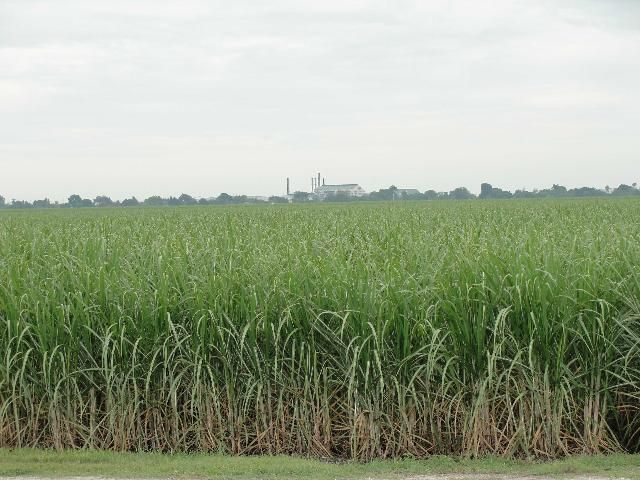Sugarcane Product in Traditional Healing: Healing Benefits You Should Know
Sugarcane Product in Traditional Healing: Healing Benefits You Should Know
Blog Article
The Journey of Sugarcane: From Harvest to Everyday Products
The journey of sugarcane is a diverse procedure that begins with thorough farming and finishes in a selection of items that penetrate our everyday lives. As we check out the numerous elements of sugarcane's trip, its function in sustainability and the more comprehensive effects for our setting come right into sharper emphasis.
Farming of Sugarcane
The farming of sugarcane is a critical agricultural procedure that needs certain environmental conditions and monitoring practices. Optimal growth occurs in subtropical and exotic areas where temperature levels range between 20 ° C and 32 ° C. Adequate rains or irrigation is crucial, as sugarcane flourishes in moist soil with well-drained conditions (sugarcane product). Soil quality substantially affects return; thus, farmers typically conduct soil examinations to determine nutrient needs
This method facilitates reliable gathering and takes full advantage of sunshine exposure. Plant rotation and intercropping are suggested methods to improve soil fertility and decrease bug invasions.
Prompt application of these plant foods can considerably enhance sugar returns. Overall, effective sugarcane farming pivots on a mix of ecological stewardship, strategic planning, and recurring monitoring methods.
Collecting Methods
Successful sugarcane farming culminates in the collecting stage, which is essential for taking full advantage of yield and making sure top quality. The timing of the harvest is critical; sugarcane is generally gathered when sucrose levels top, generally in between 10 to 18 months after planting. This duration differs based on environment, soil kind, and sugarcane variety.
Collecting strategies can be generally classified right into handbook and mechanical approaches. Manual harvesting is labor-intensive, counting on proficient workers who make use of machetes to reduce the stalks short. This method enables careful harvesting, where only the ripest walking canes are chosen, consequently improving general sugar material.
Conversely, mechanical harvesting has gotten appeal as a result of its effectiveness and cost-effectiveness. Specialized harvesters outfitted with reducing knives and conveyor systems can process huge areas swiftly, considerably reducing labor costs. This technique may lead to the inclusion of immature walking canes and a possible decrease in sugar high quality.

Despite the technique utilized, ensuring that collected canes are moved rapidly to refining facilities is necessary. Trigger taking care of decreases perishing and maintains the integrity of the sugarcane, setting the phase for ideal processing.
Processing Methods
Handling sugarcane entails several crucial steps that transform the harvested stalks right into usable items, mainly sugar and molasses. The preliminary stage is washing the walking cane to get rid of soil and particles, complied with by the removal of juice through squashing or milling. This process usually utilizes heavy rollers that damage the cane fibers to release the pleasant fluid contained within.
As soon as the juice is drawn out, it undergoes explanation, where pollutants such as dirt bits and bagasse are removed. This is commonly attained by adding lime and heating the juice, enabling sedimentation. The clarified juice is after that focused with dissipation, where water content is decreased, resulting in a thick syrup.

Inevitably, the processing of sugarcane not only creates sugar and molasses but additionally prepares for different derivatives, which will be discovered in succeeding conversations.
Products Derived From Sugarcane
Sugarcane is a functional plant More about the author that produces a large selection of products beyond just sugar and molasses. Among the main by-products are ethanol and biofuels, which have gotten importance as renewable resource sources. Ethanol, generated with the fermentation of sugarcane juice, functions as an alternate to nonrenewable fuel sources and is typically blended with gasoline to develop cleaner-burning fuels, minimizing greenhouse gas exhausts.
In addition, sugarcane is a substantial resource of bagasse, the fibrous deposit staying after juice removal. Bagasse is used in different applications, consisting of the manufacturing of paper, biodegradable packaging, and as a biomass gas for energy generation. Its usage not only reduces waste but also improves the sustainability of sugarcane handling.
Furthermore, sugarcane-derived items encompass the food market, where it acts as a natural flavor representative and sweetener in different culinary applications. In the world of cosmetics, sugarcane removes are incorporated into skincare products as a result of their all-natural exfoliating buildings.
Environmental Influence and Sustainability
The farming and processing of sugarcane have considerable effects for environmental sustainability. This crop requires considerable water resources, usually causing exhaustion of regional water materials and impacting bordering ecosystems. Furthermore, using fertilizers and chemicals in sugarcane farming can lead to soil destruction and river contamination, posturing risks to biodiversity.

Lasting sugarcane farming also advertises dirt wellness via crop turning and decreased husbandry, boosting carbon sequestration. The fostering of these methods not only supports environmental integrity yet also enhances the resilience of farming neighborhoods against climate adjustment.
Final Thought
In recap, the journey of sugarcane includes various stages from growing to processing, inevitably leading to a broad range of products. The relevance of view it now sugarcane expands beyond mere sugar, adding to renewable resource through ethanol manufacturing, lasting product packaging by means of bagasse, and all-natural essences for cosmetics. This multifaceted crop plays an important function in both dietary enrichment and environmental sustainability, highlighting its relevance in contemporary agricultural and industrial practices.
Effective sugarcane cultivation finishes in the harvesting phase, which is crucial for maximizing yield find more information and guaranteeing quality. The timing of the harvest is vital; sugarcane is usually harvested when sucrose degrees height, generally in between 10 to 18 months after growing.Handling sugarcane entails several crucial steps that change the gathered stalks into useful items, primarily sugar and molasses.Sugarcane is a functional crop that produces a wide selection of products beyond just sugar and molasses. In addition, the use of plant foods and chemicals in sugarcane farming can result in soil degradation and waterway pollution, posing dangers to biodiversity.
Report this page